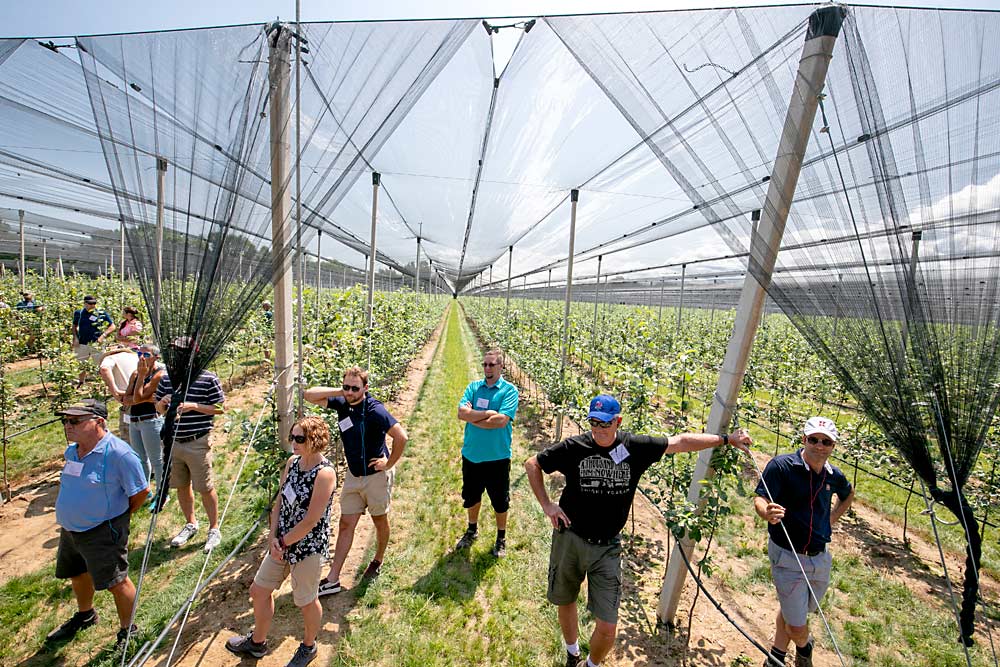
On the second day of the International Fruit Tree Association’s summer tour in the Georgian Bay region of Ontario, many attendees suddenly felt themselves transported to Italy.
It was not a collective hallucination but, rather, a new orchard planted in the typical system of South Tyrol, Italy, complete with concrete posts and black hail nets. Every piece of the orchard infrastructure, except the trees, was brought in from Italy and installed by an Italian contractor.
“You are absolutely right if you think it’s not cheap to float cement posts over on a boat,” said Ian Furlong, the Ontario farmer managing the new Sandy Creek orchards for Italian investors. But the owners wanted to grow in the system they know.
First- and second-leaf Honeycrisp on Malling 9 rootstocks was planted at 10 feet by 26 inches in rows, on the trellis designed to last through orchard generations. Furlong said it’s been a learning curve with the new plantings, which now cover about 35 acres, but the plan is to expand the orchard over the next 10 years up to about 350 acres.
At the next stop, the tour group visited another orchard experimenting with a new system: V-trellis.
Grower Kyle Ardiel shared his thinking on his small block of B42 Honeycrisp and Royal Red Honeycrisp in an 11 feet by 1 foot planting, with the trellis and trees angled out 11 degrees. With trees, the system will cost $50,000 an acre to plant out at a larger scale, Ardiel said. To cut costs, he tried planting small potted trees to compare with a typical dormant planting.
The live planting was difficult work, he said, but the budget-friendly trees are growing well.
In another block, Ardiel’s father, Shane, talked about vigor management in a block of Honeycrisp planted at 11 feet by 2 feet on Geneva 890 roots a nursery had recommended — the family’s first experience with the Geneva series.
They had just planted the block when Kyle realized, wait, these trees will be M.26 size on the G.890. To try to rescue the planting, they shook all the freshly planted trees and pulled them up a bit to reduce rooting. Two years later, the trees had well filled their space and the Ardiels expect to harvest 30 bins an acre.
The last stop of the day was at T and K Ferri Orchards, where grower Tom Ferri explained his precision crop load management system for his super spindle orchards.
His goal is to produce big fruit that can land premium prices, so crop load control is key, Ferri said. He shoots for 4o to 55 bins an acre on Honeycrisp and 45 to 65 on Ambrosia. Most of his blocks were planted at 10 feet by 18 inches and had grown quite tall.
The benefit of the system is that it’s easy to prune, Ferri said. “Well, it’s a lot of work but it’s easy work,” he said. “It’s very simple to teach people and we do more summer pruning than winter pruning. We want a narrow, narrow canopy because we want light and color.”
—by Kate Prengaman
Related: Concrete support: 2014 IFTA Italy






Leave A Comment